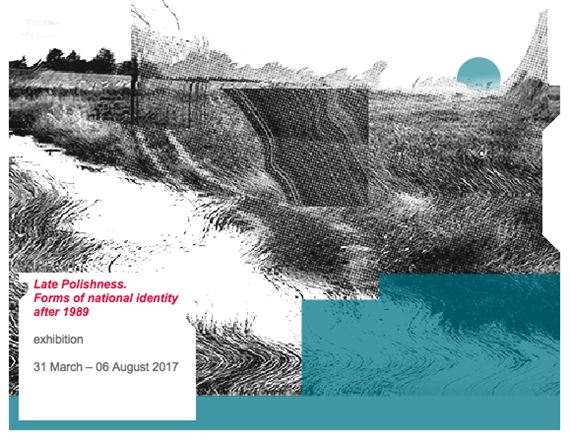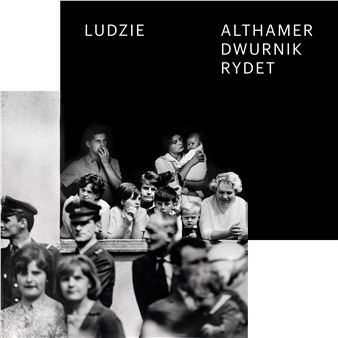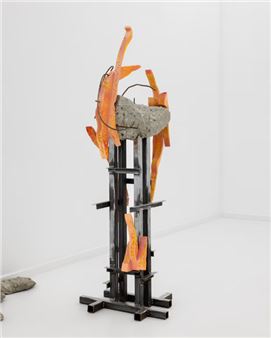Late Polishness. Forms of national identity after 1989
The project Late Polishness is dedicated to the forms which Polish contemporary identity assumes. Acting as the main space for deliberations is the exhibition, which consists of more than a hundred works and projects from dozens of contemporary artists working in the fields of visual arts, cinema, and theatre. The themes underlined in the show will be expanded on through a rich program of discussions, lectures, and screenings.
The key to the Late Polishness used in the project is the category of form. How is Polishness experienced today? How is it represented? Behind what images, symbols, figures, and narratives does it hide? The curators of the project have been searching for the answers to these questions in various fields of art, because it is the artists who give form to the collective imagination, and also to the national. Artists from varying generations have been invited to partake in the project. Contemporary classical artists have been found amongst them ã such as Krzysztof Wodiczko and Krzysztof Bednarski. There are also artists who, like Artur é£mijewski, Paweé Althamer, Oskar Dawicki, or Wilhelm Sasnal, defined the Polish art scene after 1989. There are also artists who have made their debuts in recent years; to name a few, Honorata Martin, Daniel Rycharski, Bartosz Zaskû°rski, and Katarzyna Przezwaéska. Therefore, it will be possible to view Polishness from very different, individual perspectives; consequently, we shall see the complexity of the phenomenon of national identity considered as a political issue, but also as one that is existential, personal, mythological, and even purely aesthetic.

Recommended for you
The project Late Polishness is dedicated to the forms which Polish contemporary identity assumes. Acting as the main space for deliberations is the exhibition, which consists of more than a hundred works and projects from dozens of contemporary artists working in the fields of visual arts, cinema, and theatre. The themes underlined in the show will be expanded on through a rich program of discussions, lectures, and screenings.
The key to the Late Polishness used in the project is the category of form. How is Polishness experienced today? How is it represented? Behind what images, symbols, figures, and narratives does it hide? The curators of the project have been searching for the answers to these questions in various fields of art, because it is the artists who give form to the collective imagination, and also to the national. Artists from varying generations have been invited to partake in the project. Contemporary classical artists have been found amongst them ã such as Krzysztof Wodiczko and Krzysztof Bednarski. There are also artists who, like Artur é£mijewski, Paweé Althamer, Oskar Dawicki, or Wilhelm Sasnal, defined the Polish art scene after 1989. There are also artists who have made their debuts in recent years; to name a few, Honorata Martin, Daniel Rycharski, Bartosz Zaskû°rski, and Katarzyna Przezwaéska. Therefore, it will be possible to view Polishness from very different, individual perspectives; consequently, we shall see the complexity of the phenomenon of national identity considered as a political issue, but also as one that is existential, personal, mythological, and even purely aesthetic.
Artists on show
- Anna Baumgart
- Artur Zmijewski
- Bartosz Zaskorski
- Daniel Rycharski
- Dorota Nieznalska
- Ewa Hevelke
- Grzegorz Klaman
- Honorata Martin
- Hubert Czerepok
- Igor Omulecki
- Irena Kalicka
- Jacek Adamas
- Jadwiga Sawicka
- Jakub Woynarowski
- Janek Simon
- Julita Wójcik
- Karol Radziszewski
- Karolina Breguéa
- Katarzyna Przezwaéska
- Kobas Laksa
- Krzysztof M. Bednarski
- Krzysztof Wodiczko
- Kuba Bá kowski
- éukasz Surowiec
- Maurycy Gomulicki
- Michal Budny
- Michaé Szlaga
- Monika Droé¥yéska
- Nicolas Grospierre
- Oskar Dawicki
- Pawel Althamer
- Paweé Susid
- Peter Fuss
- Piotr Uklánski
- Radek Szlaga
- Robert Rumas
- Stanislaw Szukalski
- Wilhelm Sasnal
- Witek Orski
- Wéodzimierz Pawlak
- Wojciech Pus
- Yael Bartana

 ARTISTS
ARTISTS
















